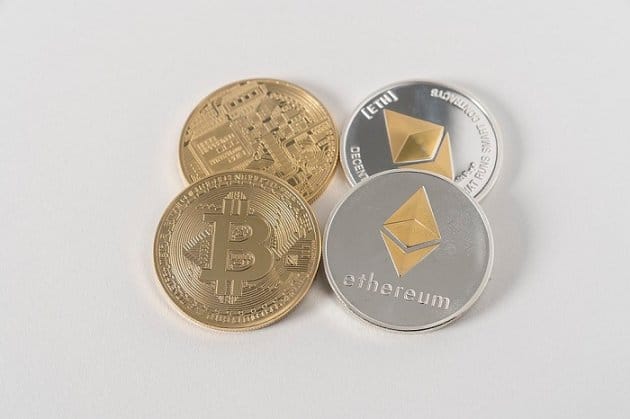In an era where the natural world is increasingly under threat from human activities, the need for innovative conservation approaches is paramount. This article explores the intriguing convergence of cutting-edge technology, particularly Ethereum, with the age-old goal of preserving endangered wildlife. As species decline and habitats vanish, the question arises: Can Ethereum’s blockchain technology provide solutions that transform the landscape of wildlife conservation?

What is Ethereum and How Does it Work?
Ethereum, often dubbed “blockchain 2.0,” goes beyond Bitcoin’s basic transactional capabilities. It’s a decentralized platform, powered by a cryptocurrency called Ether (ETH), that facilitates the execution of smart contracts. These self-executing contracts run on the Ethereum network, enabling a wide range of applications, from decentralized finance (DeFi) to supply chain management.
The Power of Tokenization in Conservation Efforts
Tokenization is a central concept in the intersection of Ethereum and wildlife conservation. It involves creating digital tokens that represent real-world assets. In conservation, this could mean tokenizing wildlife, ecosystems, or conservation projects. These tokens can be traded, purchased, and held by individuals, creating a new way to engage the public in conservation efforts.
Tokenization offers several benefits:
- Monetary Value: By attaching a value to a token, wildlife and habitats can be given economic importance.
- Global Reach: Ethereum’s decentralized nature allows for global participation and investment.
- Accessibility: It enables micro-investments, allowing a broad spectrum of people to contribute.
Fundraising and Crowdfunding through Ethereum
Traditional fundraising for conservation often relies on grants, donations, and sponsorships, which can be limited in scope and reach. Ethereum presents an alternative by enabling crowdfunding through Initial Coin Offerings (ICOs) or Security Token Offerings (STOs). This allows conservationists to raise funds from a global audience, bypassing intermediaries.
Ensuring Transparency in Conservation with Ethereum
One of the most significant advantages of Ethereum in conservation is its transparency. All transactions and contracts on the Ethereum blockchain are publicly verifiable. This transparency ensures that funds raised for conservation are used as intended, reducing the risk of misappropriation.
The Role of NFTs (Non-Fungible Tokens) in Wildlife Preservation
Non-Fungible Tokens (NFTs) are unique digital assets representing ownership or proof of authenticity. In the context of wildlife conservation, NFTs are used creatively to raise awareness and funds. Artists, photographers, and conservationists can create NFTs of wildlife-related digital art, experiences, or collectibles. These can be sold or auctioned, with proceeds directed towards conservation efforts.
NFTs offer:
- Engagement: They connect creators, collectors, and conservationists.
- Scarcity: NFTs can be limited editions, creating a sense of exclusivity.
- Digital Ownership: Ownership of a digital item can be proven on the blockchain.
Challenges and Concerns with Using Ethereum for Conservation
While Ethereum offers promise for conservation, it also comes with challenges and concerns:
- Environmental Impact: Ethereum’s Proof of Work (PoW) consensus mechanism consumes significant energy. Transitioning to Ethereum 2.0, a Proof of Stake (PoS) system, is a potential solution.
- Volatility: Cryptocurrency markets can be highly volatile, impacting the value of tokens and funds raised.
- Ethical Considerations: Ensuring that Ethereum-based projects align with ethical conservation practices is crucial.
Case Studies: Success Stories of Ethereum and Conservation
Two notable success stories exemplify Ethereum’s impact on wildlife conservation. The World Wildlife Fund (WWF) Rhino Tokenization project pioneered the tokenization of rhinos in South Africa, enabling global individuals to invest in rhino conservation, resulting in substantial funds raised and increased global engagement. Additionally, the “CryptoKitties for Good” initiative creatively merged Non-Fungible Tokens (NFTs) with conservation, generating proceeds from the sale of unique digital kittens for donation to wildlife conservation efforts. These case studies demonstrate Ethereum’s potential to revolutionize conservation by engaging a wider audience and generating vital funds.
Future Prospects: The Road Ahead for Ethereum and Wildlife Conservation
As Ethereum continues to evolve, and with the development of Ethereum 2.0’s PoS mechanism, the future looks promising for its role in wildlife conservation. The integration of IoT (Internet of Things) devices for real-time habitat monitoring and wildlife tracking is also on the horizon.
Conclusion: The Convergence of Two Worlds
In closing, the fusion of https://ethereum-eprex.com/, serves as a tool to simplify navigation within the Ethereum network, and wildlife conservation holds the potential to revolutionize the way we protect endangered species and their habitats. By tokenizing assets, fundraising globally, and ensuring transparency, Ethereum offers a powerful toolkit for conservationists. However, addressing environmental concerns, market volatility, and ethical considerations remains crucial. With careful planning and collaboration, the Ethereum blockchain can become a formidable ally in the fight to preserve our planet’s biodiversity.

